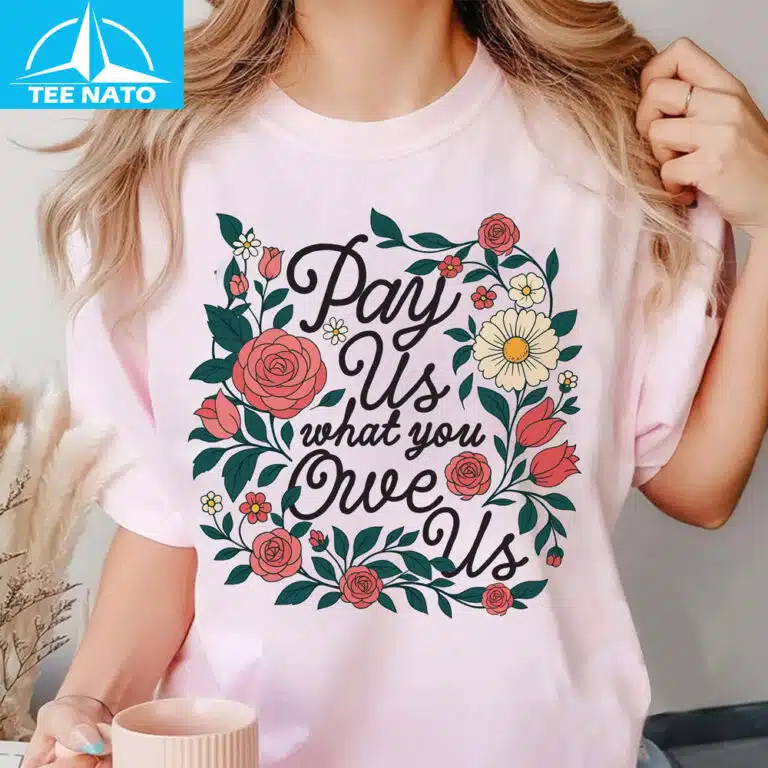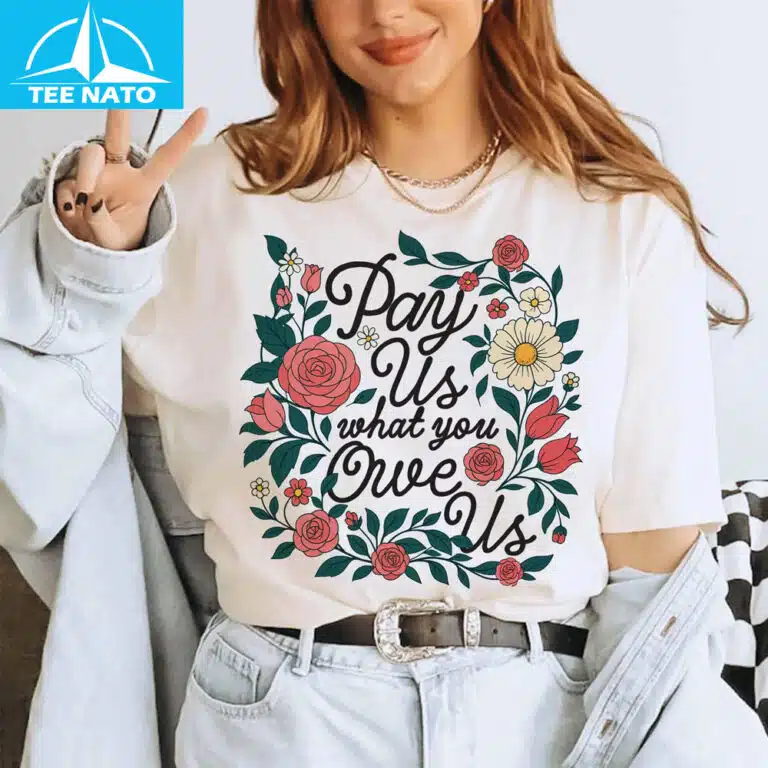The Influence of Protest Attire – Why the “Pay Us What You Owe Us” Garment Matters
The “Pay Us What You Owe Us” Garment is more than just fabric—it’s a powerful declaration demanding fairness and accountability. Whether worn at demonstrations, in daily life, or as part of a united movement, this garment amplifies the voices fighting for fair wages, restitution, or corporate responsibility.
Here, we explore its significance, how to style it, and its impact.
Fashion has always been a canvas for advocacy, and the “Pay Us What You Owe Us” Garment is a modern symbol of defiance. It merges individual style with a crucial message, transforming its wearers into living billboards for economic equity.
This garment deeply resonates with proponents of labor rights, underpaid individuals, and marginalized communities. Its message is universal—whether addressing wage theft, racial wealth gaps, or corporate exploitation.
By sporting it, individuals align themselves with movements striving for economic fairness.

Unlike generic slogans, this garment directly confronts systemic inequalities. It is precise, challenging, and refuses to soften its demand for accountability.
In contrast, vague phrases like “Peace Now” lack the same urgent specificity.

Viral moments have propelled the garment into widespread recognition. Protesters wearing it at rallies often see their images shared extensively, reinforcing the demand.
This digital visibility ensures the message reaches beyond physical gatherings.
Activist fashion thrives when the message is unmistakable. Here’s how to make the “Pay Us What You Owe Us” Garment truly stand out.
Avoid overly complex patterns that could distract from the main slogan.
For formal settings, layer it under a blazer to subtly introduce the message. At protests, wear it solo for optimal visibility.
Its versatility ensures it’s appropriate anywhere.
Combat boots echo the garment’s assertive tone. Sneakers keep it casual yet intentional.
Every choice should reinforce the garment’s core purpose.
From picket lines to legal proceedings, the “Pay Us What You Owe Us” Garment has left its mark.
Amazon warehouse workers wore it during strikes for better pay. Its clarity cut through corporate PR spin.
This visual solidarity strengthened collective bargaining efforts.
Activists paired it with “Reparations Now” signs at BLM marches. It highlighted the intersection of racial and economic justice.
The garment became a unifying symbol across various causes.
Shareholder meetings saw employees wearing it to confront executives. Its bluntness forced uncomfortable but essential conversations.
Even skeptics couldn’t ignore its direct call to action.
How does this garment measure up against other forms of activist fashion?
Compared to “Act for Change,” this garment names the specific issue—unpaid wages. Its precision makes it harder for opponents to disregard.
Faddish slogans fade; the pursuit of economic justice remains pertinent. This garment’s demand transcends temporary viral moments.
Politicians and CEOs react more intensely to direct claims. It’s designed to unsettle established power structures.
Maximize its impact with these practical strategies.
Wear it at rallies, discussions with employers, or media interviews. Optimal timing ensures the message is not diluted.
Pair it with petitions, speeches, or social media campaigns. Fashion alone won’t revolutionize systems—but it is a potent instrument.

Avoid altering the slogan to preserve its recognition. Consistency strengthens its association with the cause.
The “Pay Us What You Owe Us” Garment is a potent blend of fashion and activism, commanding attention where mere words might fall short. Whether through strategic styling, impactful real-world examples, or comparisons to other protest wear, its strength lies in its unapologetic clarity. By incorporating it into broader movements, wearers transform everyday attire into a powerful catalyst for change. `
POSTER SEO_SIBATOOL